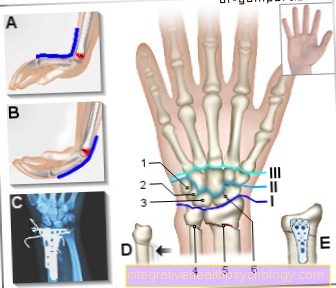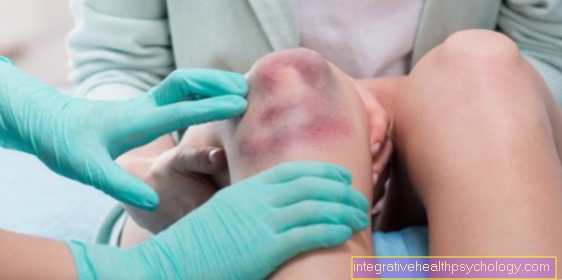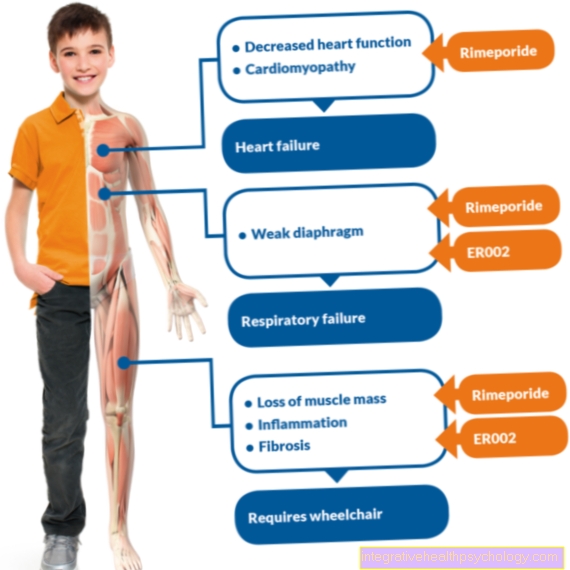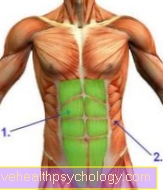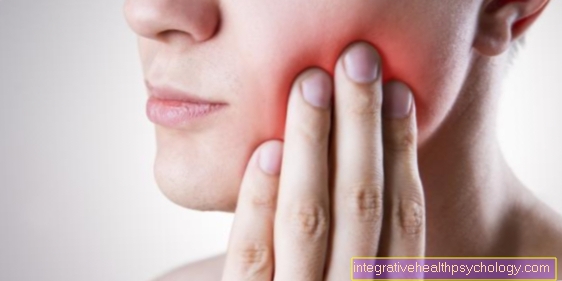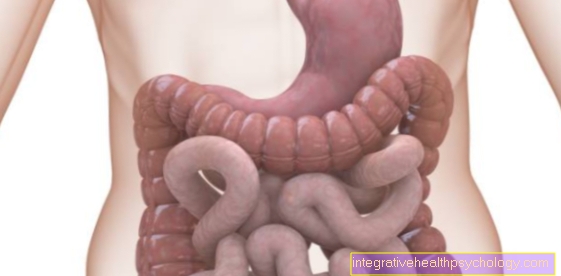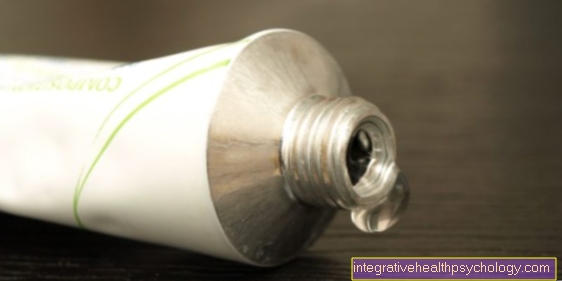Arthrosis stages
Types of stages of osteoarthritis
There are different classifications according to which the arthrosis stages are classified.
According to the X-ray, the different stages are according to Kellgren and Lawrence assigned.
The cartilage damage is after Outerbridge classified.

The different stages of osteoarthritis
A progressive osteoarthritis is divided into a total of three stages of osteoarthritis.
Arthrosis stage 1
Arthrosis stage 1 is arthrosis that does not cause any symptoms and is usually not noticed by the patient. One also speaks of silent osteoarthritis. The surface of the cartilage is still intact and smooth. However, there is a softening of the cartilage.
As a rule, stage 1 osteoarthritis is seen as an incidental finding. For example, patients come to the doctor with an X-ray of a joint because they fear a fracture in the course of an accident.
Characteristic changes in the X-ray indicate an arthritic process. It can be assumed that most people who have passed their 60th year of life suffer from at least one but probably several arthritis, the cause of which is usually years of incorrect exposure.
Arthrosis stage 2

Arthrosis stage 2 is divided into all arthroses in which an inflammatory process is already underway and usually already causing symptoms, i.e. lead the patient to the doctor. It is often the case that osteoarthritis starts in stage 1 and then progresses to stage 2. How long the osteoarthritis remains in stage 1 and when it changes to stage 2 varies from patient to patient. Arthrosis of stage 1 show the typical painful symptoms. However, the pain is not permanent and can be controlled in some cases without medication.
Please also read: Symptoms of Osteoarthritis
Arthrosis stage 3
Arthrosis of arthrosis stage 3 are also referred to as manifest arthrosis, which are active, trigger a moderate to strong inflammatory reaction and exist for a long period of time.
Learn more about the osteoarthritis flare-up
All stage 2 osteoarthritis will progress to stage 3 osteoarthritis over time if left untreated. Due to the severity of the complaints, intensive medical and physical treatment of the patient is necessary. In addition to the mostly permanent pain, there are also restricted mobility and reduced functionality of the affected joints.
Read more about osteoarthritis therapy and osteoarthritis surgery
Appointment with ?

I would be happy to advise you!
Who am I?
My name is dr. Nicolas Gumpert. I am a specialist in orthopedics and the founder of .
Various television programs and print media report regularly about my work. On HR television you can see me every 6 weeks live on "Hallo Hessen".
But now enough is indicated ;-)
In order to be able to treat successfully in orthopedics, a thorough examination, diagnosis and a medical history are required.
In our very economic world in particular, there is too little time to thoroughly grasp the complex diseases of orthopedics and thus initiate targeted treatment.
I don't want to join the ranks of "quick knife pullers".
The aim of any treatment is treatment without surgery.
Which therapy achieves the best results in the long term can only be determined after looking at all of the information (Examination, X-ray, ultrasound, MRI, etc.) be assessed.
You will find me:
- Lumedis - orthopedic surgeons
Kaiserstrasse 14
60311 Frankfurt am Main
You can make an appointment here.
Unfortunately, it is currently only possible to make an appointment with private health insurers. I hope for your understanding!
For more information about myself, see Lumedis - Orthopedists.
classification
A common classification of the stages of osteoarthritis, which is particularly used in the area of knee osteoarthritis, is the Outerbridge classification I-IV.
Stage I - The cartilage softening
In stage I, the surface of the cartilage appears to be preserved and smooth. However, there is a softening of the cartilage.
During a jointoscopy (Arthroscopy) the softening can be tested with the help of an instrument (probe). Excessive pressure with a hook can lead to damage (faster than with healthy cartilage). The changed cartilage is therefore more prone to further injuries. In addition, there may already be bubbles.
Stage II - The superficial cartilage damage
In the second stage, the surface of the cartilage is changed. The cartilage appears frayed and rough. There may also be minor cracks. However, this damage is still limited to a maximum of half the total thickness of the cartilage.
The depth of a crack can be estimated with the stylus and can expand over time.
Stage III - The deep cartilage damage
The cartilage shows significant damage and tears. This damage now affects more than half the thickness of the cartilage layer. However, the underlying bone is (subchondral bone) not visible.
Cracks of this depth can be the result of trauma. Surgical treatment is usually possible if the defects are not narrow.
In addition, there may be wide depressions that can lead to bald cartilage. These defects are more difficult to treat surgically
You can find more information about surgery for osteoarthritis here.
Stage IV - full-layer defect
At this stage the entire layer of cartilage is also affected. In addition, the underlying bone is revealed. An area in which the cartilage is worn down to the bone is also called bald cartilage.
If there is further stress and wear, the bone can also be affected. Deformations are the result. This process is usually accompanied by severe pain.
Arthritis stages of the knee

Arthritic wear and tear in the knee joint develops over many years. At the beginning hardly any complaints are perceived until finally, after many years, every strain on the joint increases Pain symptoms leads. This is why osteoarthritis is often only discovered in more advanced stages.
However, the earlier the diagnosis one Knee osteoarthritis the earlier therapy can begin and the Wear process stopped become. In the early stages of knee osteoarthritis, there is initially a (usually small) Cartilage damage responsible for causing changes in the knee joint. There will be a on some sections of the joint additional load and the cartilage and, in the long term, the underlying bone are attacked.
The duration and extent of the so-called Intermediate stage In the case of osteoarthritis of the knee, it depends on how much the knee joint is strained by body weight, turning movements or sports with rapid acceleration and changes of direction. The cartilage is gradually abraded and the pressure on the underlying bone increases. To better distribute the pressure, there is one Enlargement of the joint surface, it form bony extensions (Osteophytes). In the case of osteoarthritis of the knee, these excesses are sometimes palpable or even visible.
The cartilage damage continues to spread, the Joint space narrowed and thereby the knee joint becomes more and more immobile. In the late stage of knee osteoarthritis, the cartilage and the thigh are broken down- and lower leg bones lie directly on top of one another. in the X-ray image are Condensations and Hardening of the Bone (subchondral sclerotherapy) to see. When the joint space is completely gone, the affected knee joint is stiff.
Arthritis stages of the hip
In the first stage of hip arthrosis it often occurs Pain with heavy exertion of Hip joint. The pain is caused by the Wear in the joint itself, but also Muscle aches by an unconsciously taken Relieving posture can occur. This often leads to Muscle tension in the lumbar vertebrae, buttocks or thighs.
in the second stage the complaints are increasing and are already joining passive movements on. During active movements, the usually shortened muscles are painful because the tension of the tendons on the bones increases and the pressure on the joints increases. Sometimes it happens Swelling in the hip joint or to one Joint effusion.
in the third stage kick the Pain even at rest on, there are distinct Restrictions on movement of the joint lockable. Especially with the Osteoarthritis of the hip there may be an increasing shift in the stress points through the Deformity of the joint and the changed posture come. This in turn leads to a relieving posture, which further atrophies the muscles. Due to the loss of the articular cartilage, the joint can unstable the stabilizing ligaments can loosen. The hip joint can also be in a late stage of osteoarthritis stiffen.
Learn more about the Stages of hip osteoarthritis






